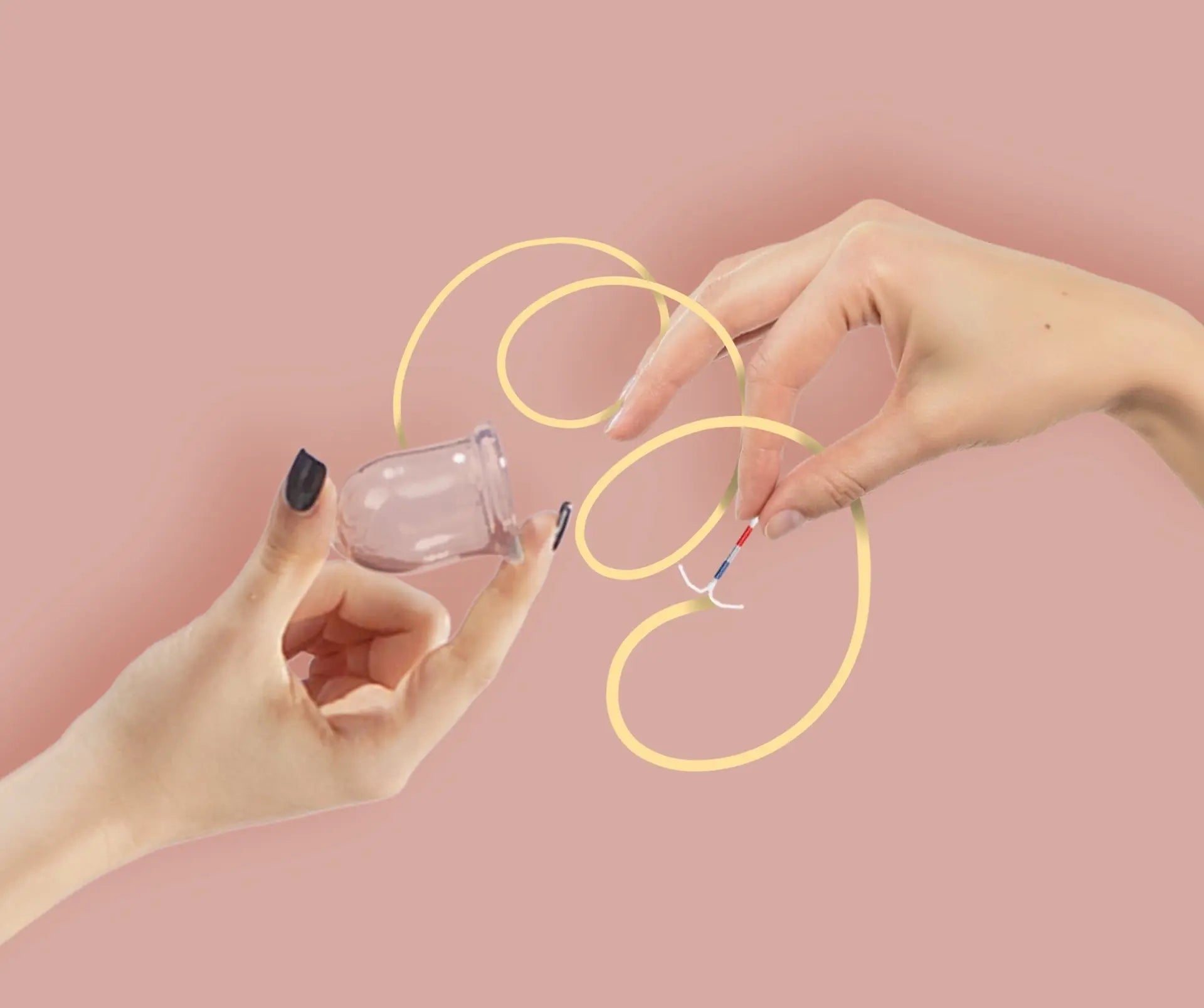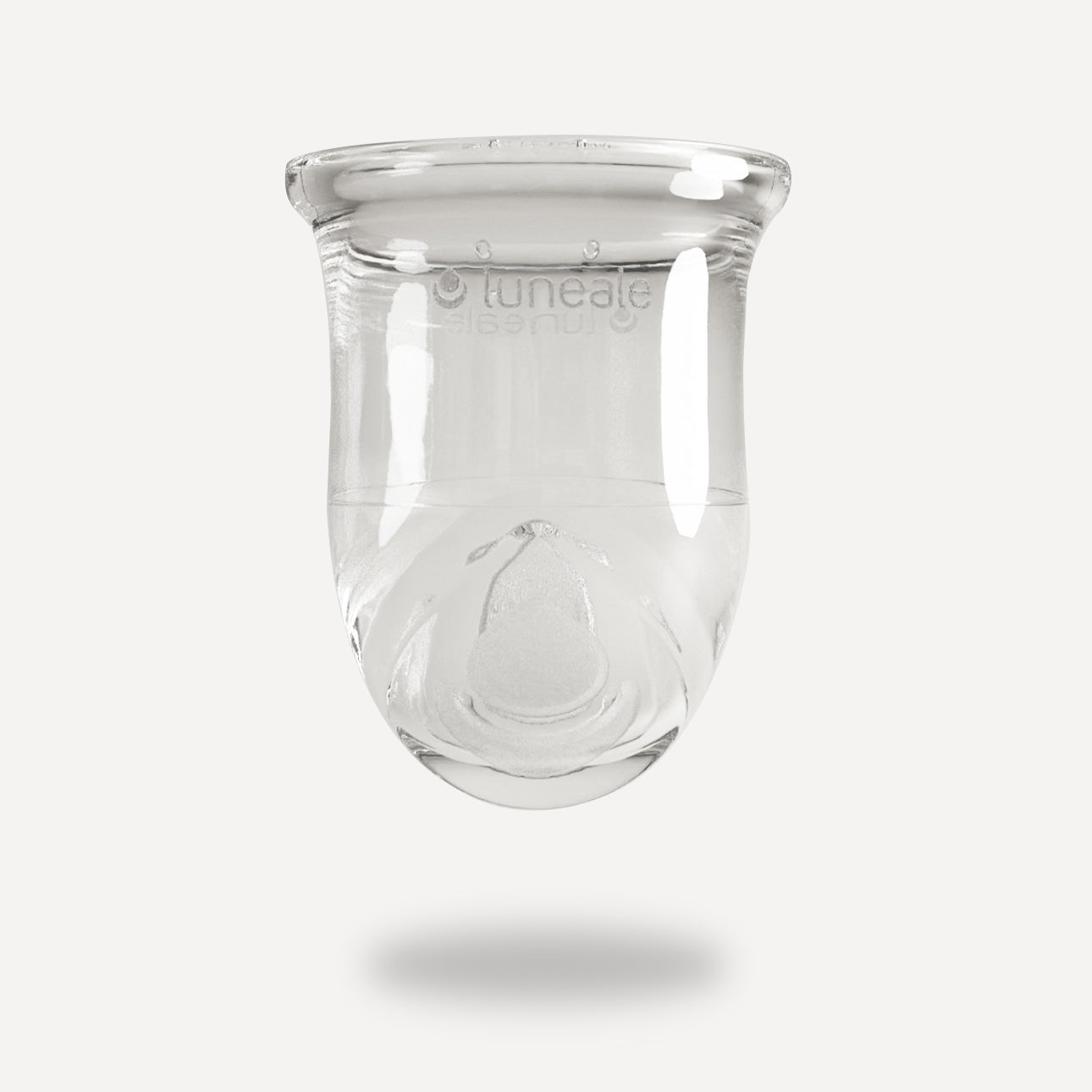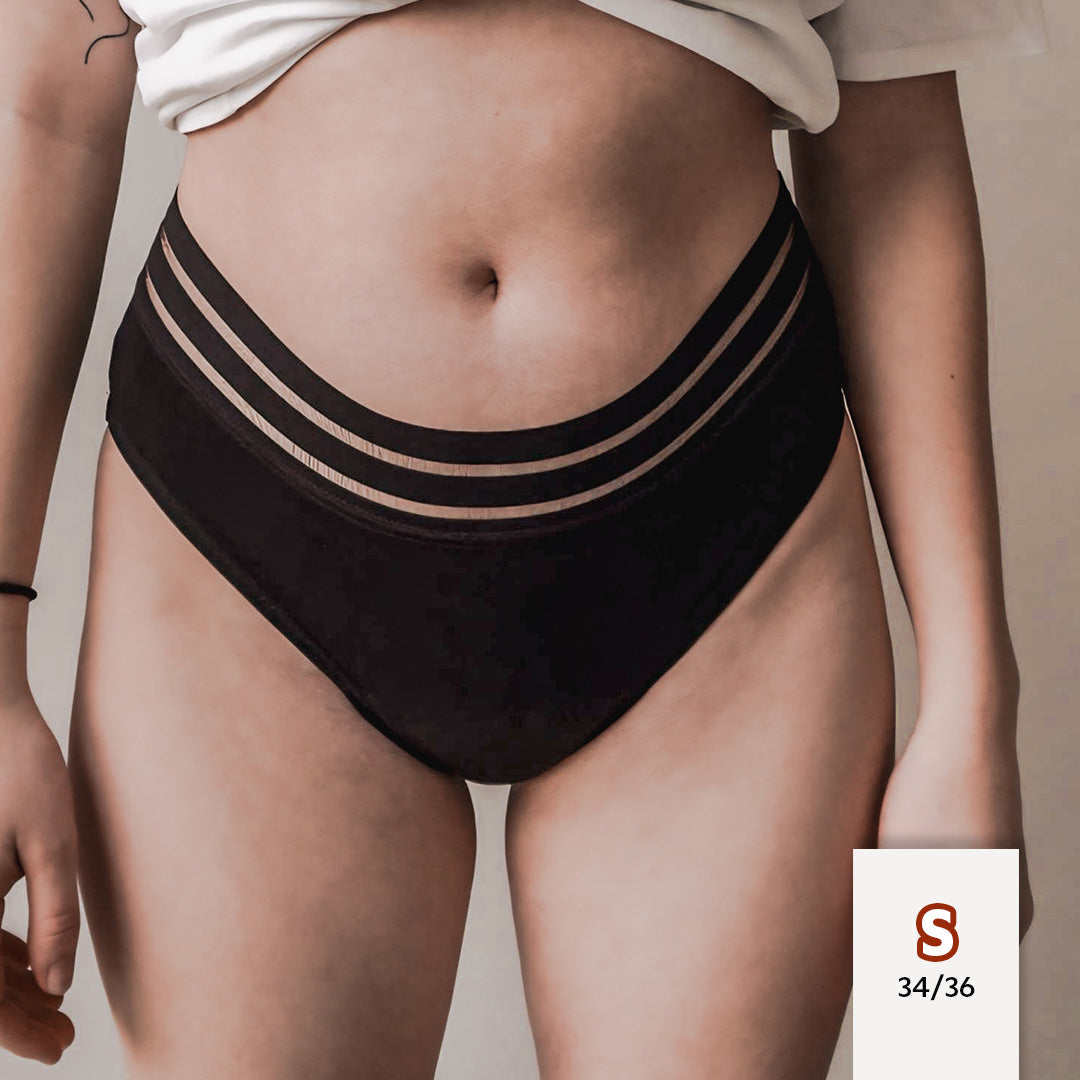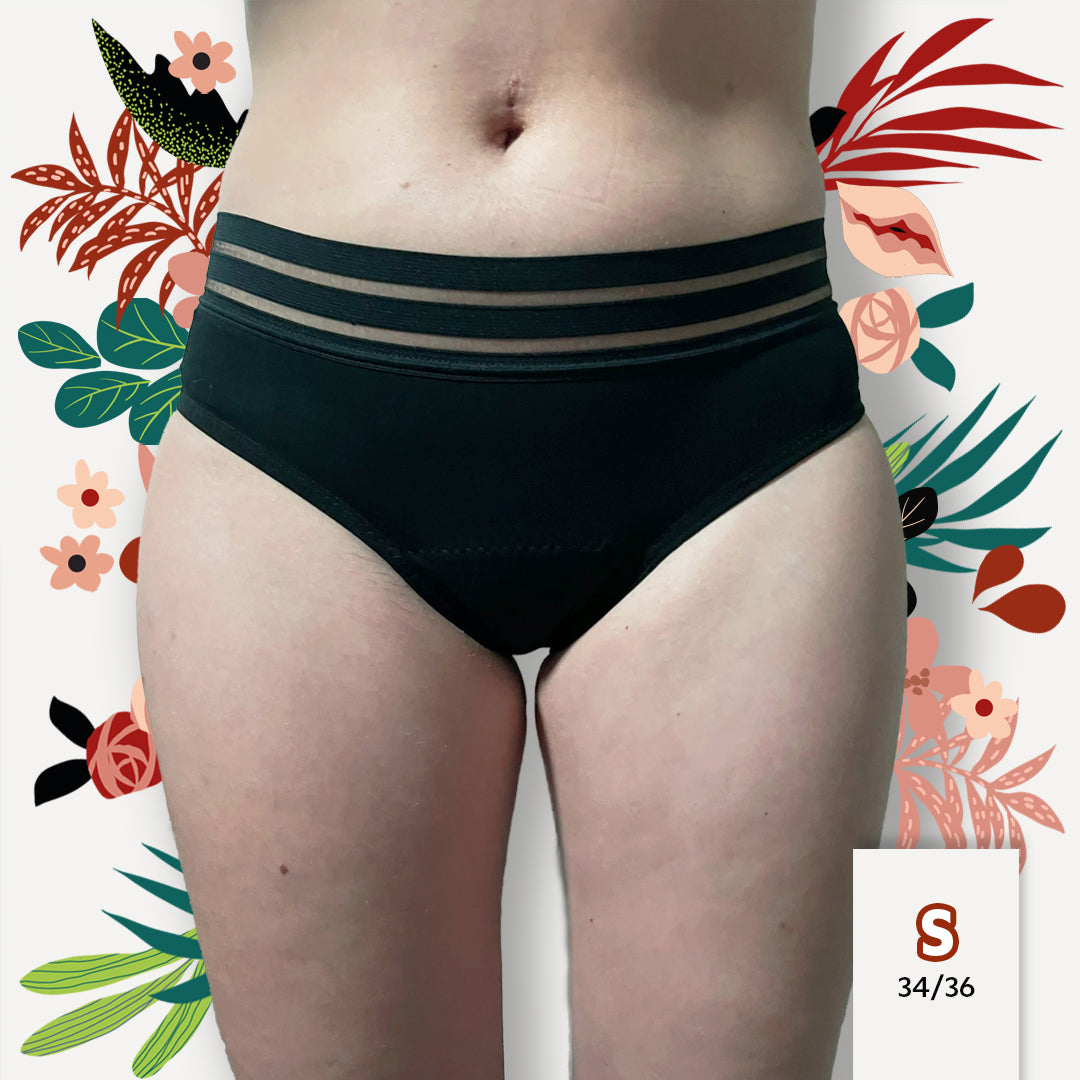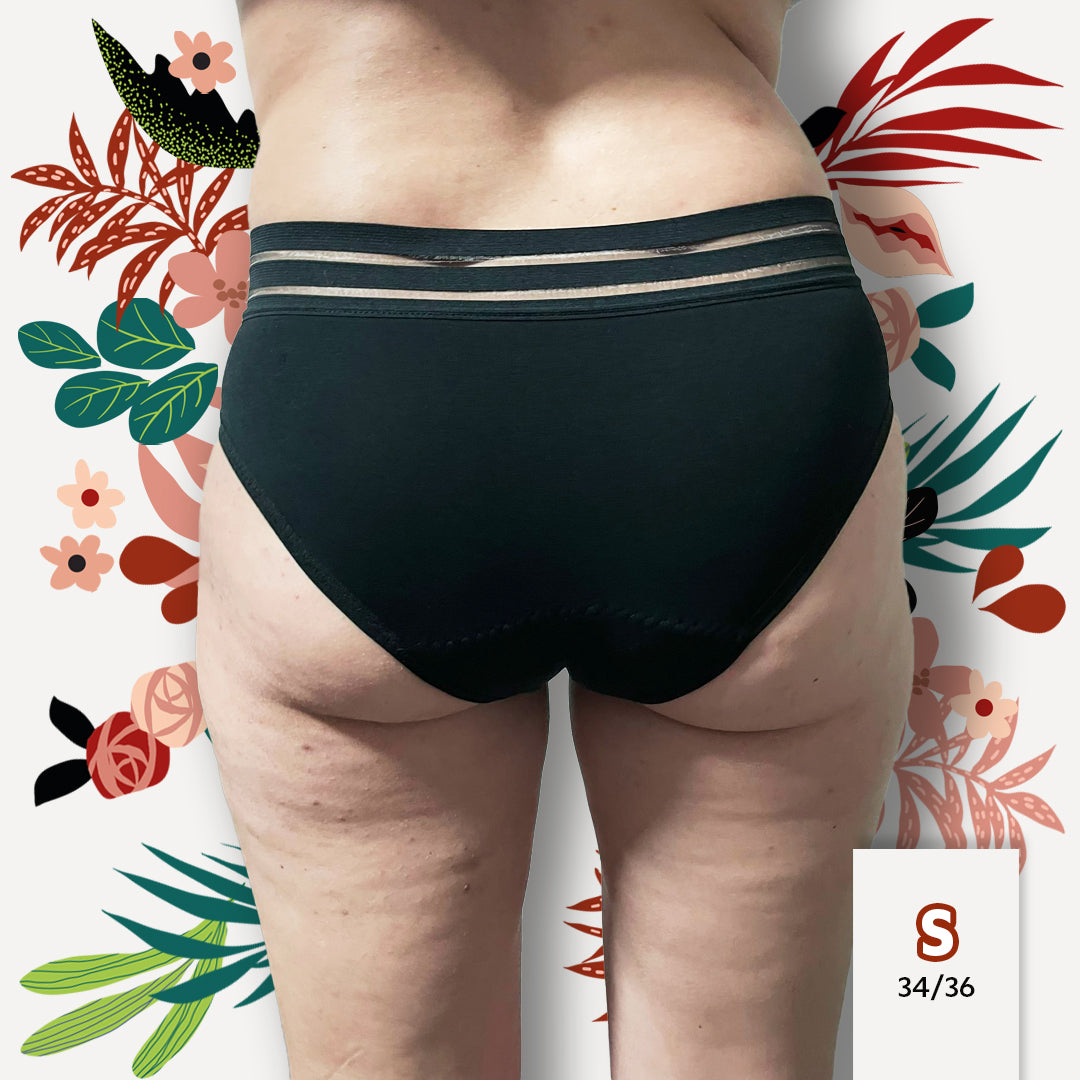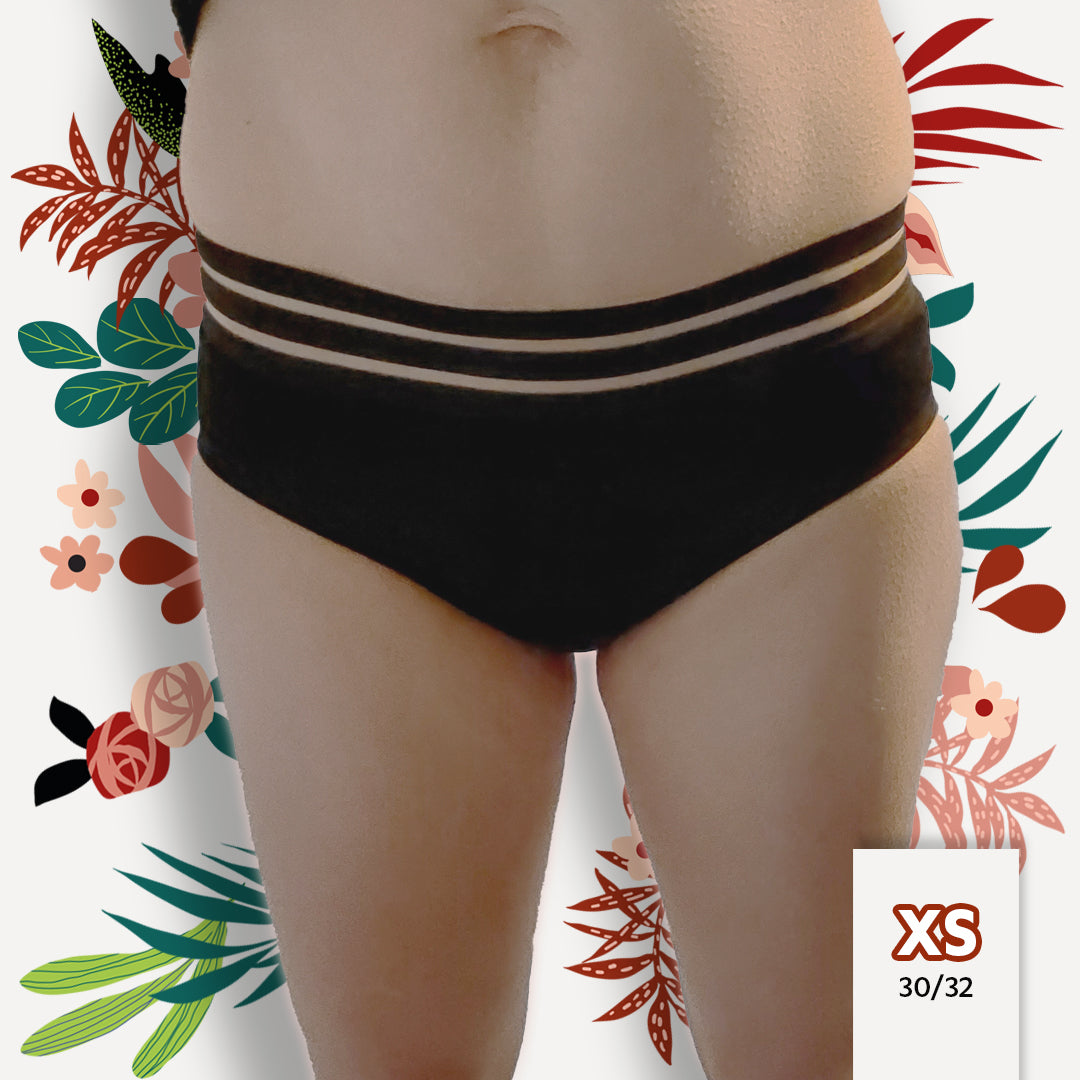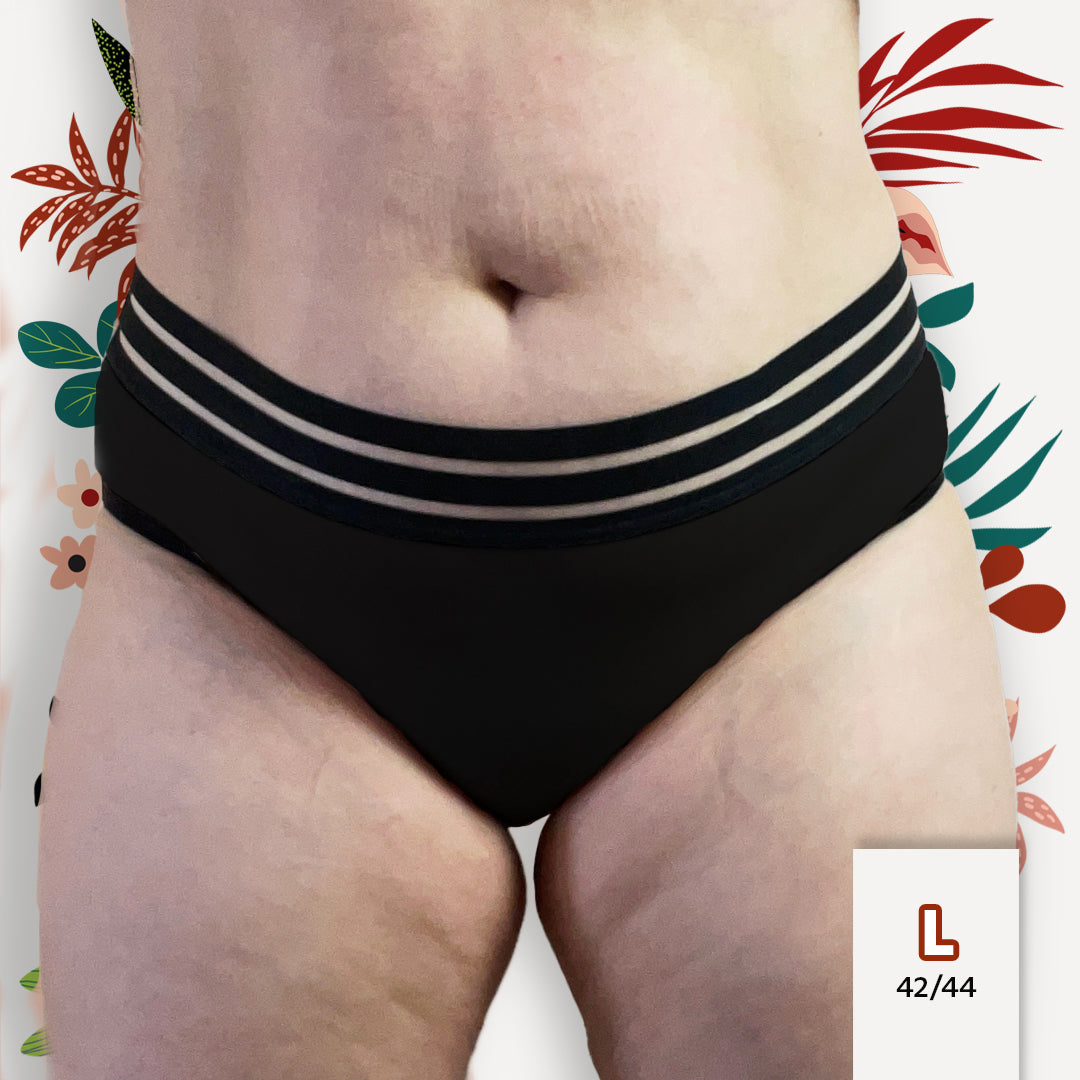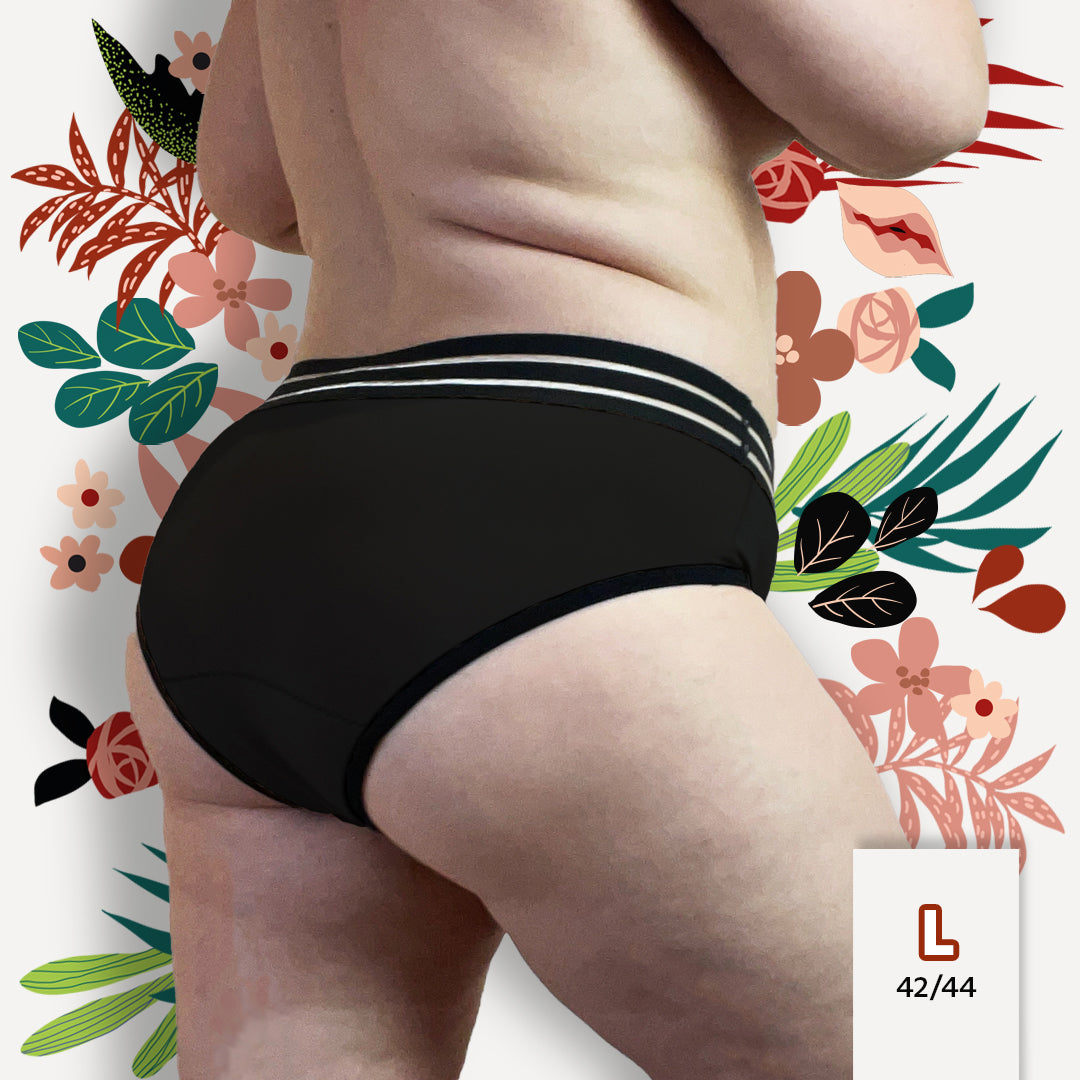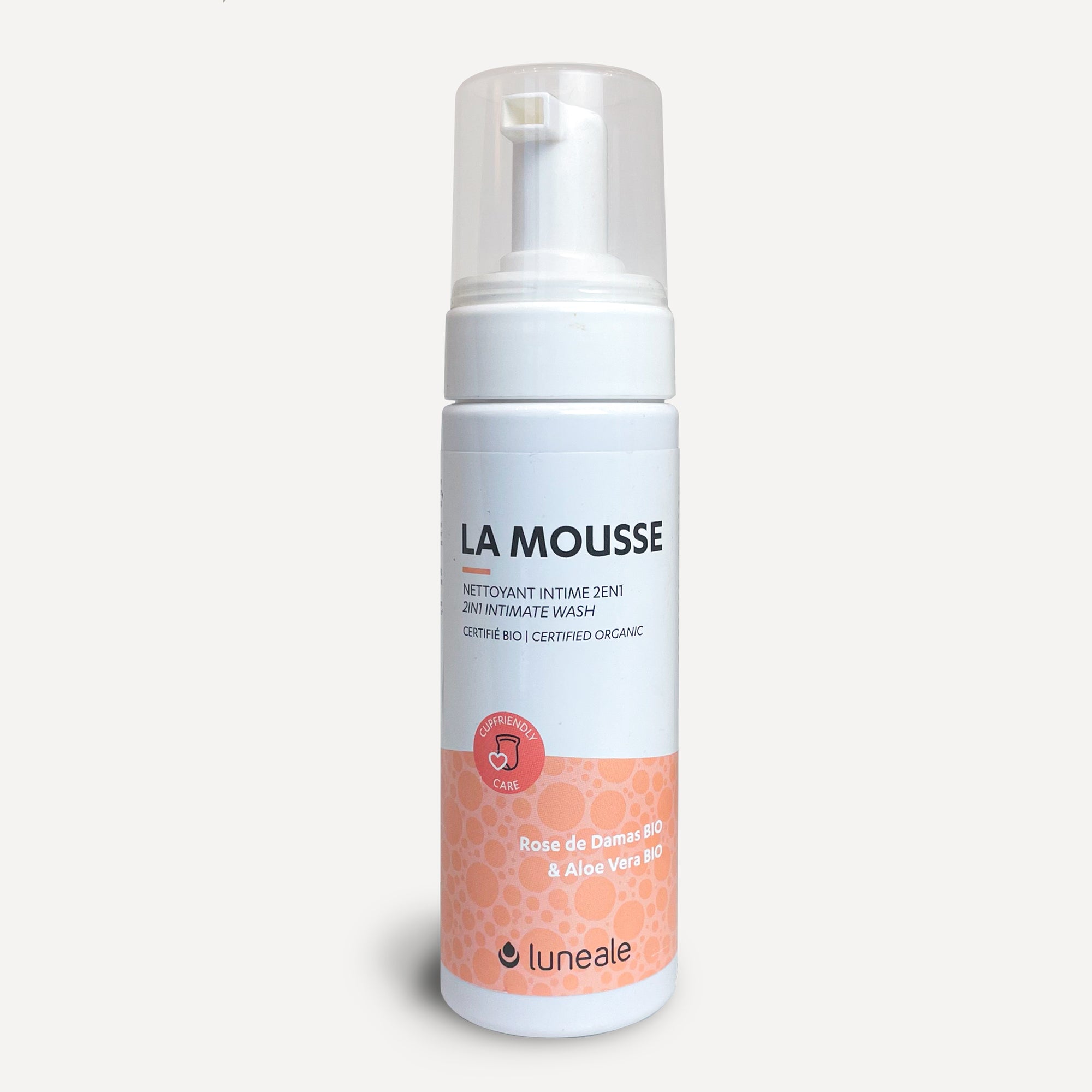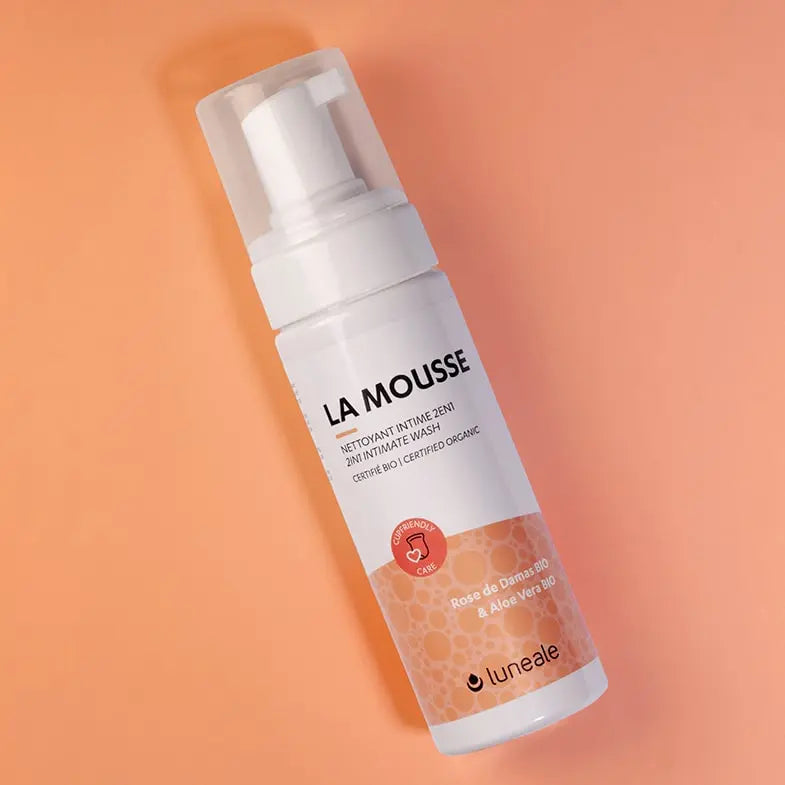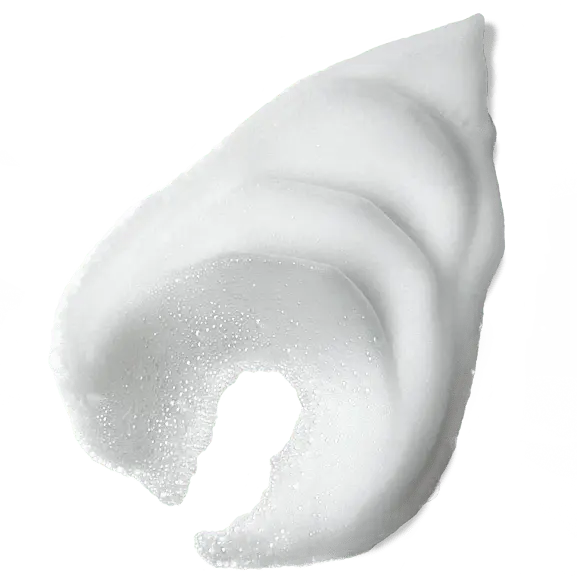Il est tout à fait possible d'utiliser une cup menstruelle lorsqu'on a un stérilet/DIU, mais il y a quelques précautions importantes à prendre. Pour tout comprendre, On vous donne les éléments pour tout comprendre et prendre la bonne décision pour vous !
Qu'est ce qu'un Stérilet (ou DIU) ?
Le DIU (pour Dispositif Intra-Utérin), qu'on appelle aussi stérilet, est une méthode de contraception en forme de T de 3,5cm de haut environ, qui est efficace entre 2 et 10 ans selon les modèles.
Il est inséré dans l'utérus par un·e professionnel·le de santé compétent·e : cela peut être votre gynécologue, votre sage-femme ou votre médecin généraliste.
Il y a quelques années, on posait un DIU seulement aux femmes qui avaient eu des enfants, mais ce n’est plus le cas aujourd’hui. Car non, le « stérilet » ne rend pas stérile (d’où le fait qu’on préfère aujourd’hui l’appeler DIU, afin de ne pas créer de confusion)
Le DIU se termine par un fil pour le retrait qui dépasse par le col et qui est coupé plus ou moins court après que le DIU soit posé.
Il existe 2 types de DIU :
Le stérilet au Cuivre
Il est fabriqué en plastique et recouvert partiellement de cuivre qui crée une légère inflammation dans l’endomètre (c’est-à-dire la paroi de l’utérus) qui empêche la nidation.
Le cuivre a aussi une action spermicide. Ce DIU peut avoir un effet sur les règles (surtout après la pose), en les rendant plus abondantes. Voire BEAUCOUP plus abondantes. En général, cette perturbation ne dure que quelques cycles.

Le stérilet hormonal
Il contient une hormone progestative qu’il libère progressivement.
Cette hormone a un effet contraceptif : elle épaissit les sécrétions du col de l’utérus, de façon à ce que les spermatozoïdes ne puissent plus passer.
Il peut lui aussi avoir un effet sur les règles, puisque beaucoup ont des règles moins abondantes ou moins longues, voire un arrêt de règles.
Dernièrement, il a été mis en cause par plusieurs personnes qui lui attribuent de grosses dépressions. Restez donc vigilant.e.s et à l’écoute de votre corps.
Où et comment est placé un stérilet ?
Le stérilet est placé par le.la médecin, qui introduit une canule à travers le col de l’utérus. Il est ensuite glissé à travers cette canule dans l’utérus, et ses « bras » se déploient. La pose est parfois un moment un peu gênant ou légèrement douloureux, mais cela ne dure pas longtemps.
Voici ce que cela donne en situation :

Comment retire-t-on un stérilet ?
Comme la pose, le retrait se fait par un.e gynécologue / sage-femme / généraliste, qui doit tirer sur les fils dans l’axe du col : les « bras » du stérilet vont se replier pour passer par le col.
Et comme le montre le schéma ci-dessous, l’axe du col est très souvent différent de l’axe du vagin (ce sera utile de retenir ceci pour la suite…)

Quelles sont les causes fréquentes de l'expulsion d'un stérilet ?
Il est communément admis qu’environ 4% des stérilets sont expulsés spontanément. Le plus souvent, cette expulsion survient dans les 3 mois suivant la pose.
Les causes de cette expulsion peuvent être multiples :
– Le corps ne l’accepte pas bien
– La forme de l’utérus fait qu’il ne tient pas bien en place
– Il a été placé trop bas
– Lors des règles, le col est plus ouvert et l’utérus se contracte : il a donc plus de facilité à être expulsé.
Ma cup menstruelle peut-elle aspirer mon stérilet ?
Pour les cups menstruelles classiques (à tige), c’est déjà peu probable. En effet, pour retirer un DIU, il faut tirer les fils dans l’axe du col de l’utérus. L’éventuel effet de succion (ou effet ventouse) que vous pourriez subir en tirant sur la tige d’une cup menstruelle classique s’appliquerait dans l’axe du vagin, ce qui aurait donc a priori peu d’impact sur votre DIU.
Avec La Cup Luneale l’effet ventouse est limité au minimum, d’abord parce qu’elle est très souple, mais aussi parce que pour la retirer, il est impératif de pincer le MoonPad ce qui a pour effet immédiat d’annuler cet effet.
Cela nous permet d’affirmer que La Cup Luneale est la plus sûre pour les porteuses de DIU.
Quelles précautions faut-il prendre quand on porte un stérilet et qu'on veut passer à La Cup menstruelle ?
1. Vérifier et éventuellement ajuster la longueur des fils de votre stérilet
Il faut demander à votre gynécologue/sage-femme/généraliste de couper les fils courts. Pas à ras du col, évidemment (mais pas d’inquiétude, de toutes façons, ce sont des professionnel·le·s, iels sauront donc trouver le bon compromis)
Car si les fils sont longs, ils peuvent se coincer entre la paroi vaginale et le bord supérieur de la cup.
Du coup, à force de tirer sur les fils, cela pourrait faire traction sur le DIU, comme montré dans cette illustration :

2. Eventuellement, attendre 3 mois environ après la pose de votre stérilet pour utiliser une cup menstruelle
Cette période de 3 mois correspond à celle où le nombre d'explusions spontanées de stérilets est le plus important.
Alors certes, vous pouvez utiliser votre cup après l'échographie de contrôle du placement correct de votre stérilet (généralement quelques semaines après sa pose), mais il faut avoir conscience qu'il est possible que pendant ces 3 mois, votre stérilet bouge ou soit expulsé sans que cela ne soit directement attribuable à votre cup menstruelle.
Que disent les études scientifiques sur le duo stérilet et cup menstruelle ?
Une seule étude a été réalisée sur le sujet (référence en bas de page), publiée en 2012 au Canada.
Sur 930 femmes qui ont participé à l’étude :
– 74% utilisaient des tampons (moins de 30ans : 61% – nullipares : 69%)
– 43% utilisaient des serviettes (moins de 30ans : 51% – nullipares : 54%)
– 10% utilisaient des cups (moins de 30ans :77% – nullipares : 88%)
Note : Le total est supérieur à 100% car certaines utilisaient plusieurs type de protections périodiques.
620 femmes sont arrivées au terme de l’étude avec un suivi correct.
Le taux d’expulsion moyen dans les 2 mois suivant l’insertion a été de 3,5%, équitablement répartis entre les 3 types de protections périodiques.
L’étude a donc conclu qu’il n’y a aucune influence du type de protection utilisé sur l’expulsion du DIU.
Donc vous pouvez dormir tranquille avec votre cup, vous ne risquez pas plus l’expulsion qu’avec une serviette !
Mais nous sommes conscients que quand on expulse spontanément un stérilet avec une serviette, on ne pense pas qu’elle en est la cause. Or quand on retrouve son stérilet dans sa cup menstruelle, forcément, c’est humain de penser qu’elle en est la cause…
Si vous avez des questions ou un retour d’expérience à nous faire, vous pouvez bien entendu laisser un commentaire !
source : Does using tampons or menstrual cups increase early IUD expulsion rates? Ellen R. Wiebe & Konia J. Trouton – Department of Family Practice, University of British Columbia, Vancouver BC, Canada

